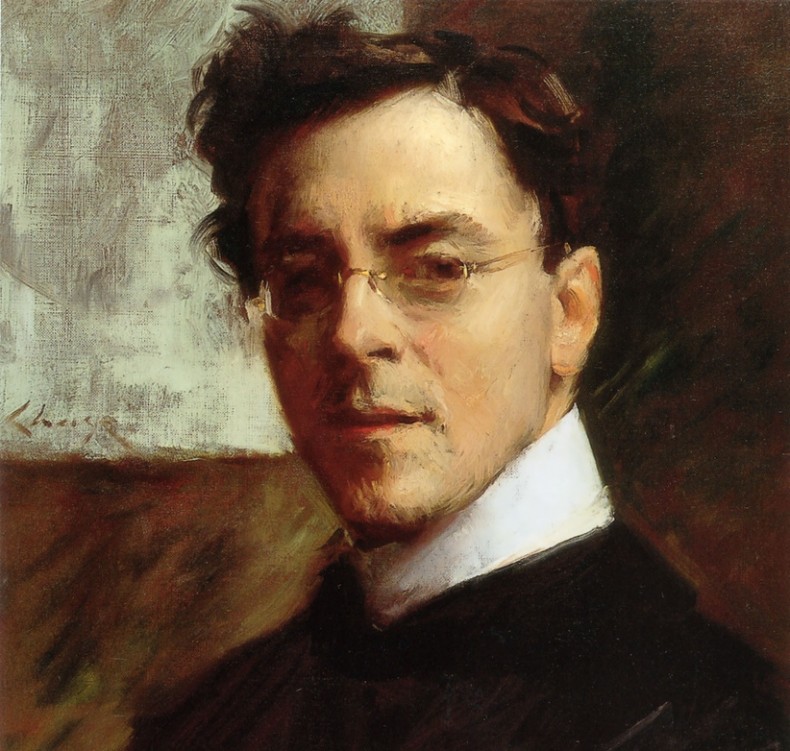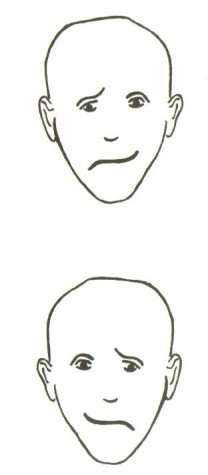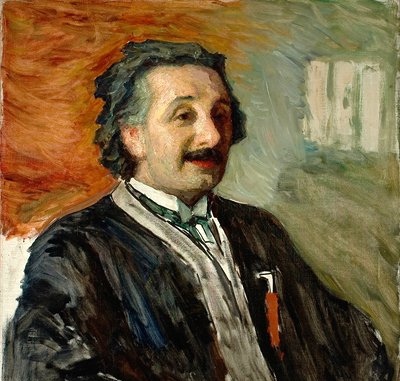It’s a Redux week here at LWON as we take a short summer break. My holiday reading is Tales From Both Sides of the Brain: A Life in Neuroscience, by Michael S. Gazzaniga. It’s a memoir of the amazing discovery of split-brain phenomena in patients whose left and right brains have been separated. It put me in mind of this guest post by Sam Kean that ran on May 5, 2014. I think it might be my favorite guest post so far. Enjoy!
 If neuroscientists could pick one idea to pack into a wormhole and expel to the outer reaches of the galaxy, there would be several worthy candidates. Some would probably pick the notion that you can “read” people’s tastes and preferences and even political ideologies on brain scans. Others might banish all talk of “neuroplasticity” and “mirror neurons.” Still others would rejoice to never hear another person ramble on about the “logical” left brain versus the “artistic” right brain, and how you can fulfill your creative potential only by thinking with both halves of your brain at once. Who knew!
If neuroscientists could pick one idea to pack into a wormhole and expel to the outer reaches of the galaxy, there would be several worthy candidates. Some would probably pick the notion that you can “read” people’s tastes and preferences and even political ideologies on brain scans. Others might banish all talk of “neuroplasticity” and “mirror neurons.” Still others would rejoice to never hear another person ramble on about the “logical” left brain versus the “artistic” right brain, and how you can fulfill your creative potential only by thinking with both halves of your brain at once. Who knew!
All that said, backlashes can go too far sometimes. And in the last case especially, it’s a shame that hippie-dippy pseudopsychology has turned a lot of people off to the fascinating world of left brain/right brain differences. The two hemispheres really do have distinct talents, and while it’s easy to make too much of those differences, they do offer a fascinating peek at how the brain evolved and how it works in certain situations. Take the ability to read emotions on other people’s faces.
 Consider these simple line drawings of half-smiley, half-frowny faces. In a literal sense, each is equal parts sad and happy. But to most people the emotion on the left side of each face (from the viewer’s point of view) dominates, and determines the overall emotional tenor.
Consider these simple line drawings of half-smiley, half-frowny faces. In a literal sense, each is equal parts sad and happy. But to most people the emotion on the left side of each face (from the viewer’s point of view) dominates, and determines the overall emotional tenor.
There are a few reasons for this. One, the brain is cross-wired (with the right hemisphere controlling the left side of the body, and vice-versa), so things in your left visual field tap into right brain. Two, the right brain generally recognizes faces better. Three, the right brain also takes the leads in processing emotions. To be sure, the left brain can process faces and emotions, too—just not as well. So at a glance, most people read the left side of a face as the “true” emotion. Along those lines, if you bisect a person’s photograph and view each half independently, people usually think s/he “looks like” the left half more than the right half.
Artists have long exploited this left/right asymmetry to make their portraits more dynamic. Generally, the left half of someone’s face (again, the side controlled by the emotive right brain) is more expressive, and surveys in European and American art museums have found that something like 56 percent of men and 68 percent of women in portraits face the left side of the canvas. Surveys of portraits in Egypt and Japan turned up a healthy majority of left-facing portraits as well. By chance alone, you’d expect closer to 33 percent, since subjects could face left, face right, or face straight forward.
A recent study revealed an even stronger bias in Crucifixion scenes, which show Jesus on the cross. Among 550 depictions, over 90 percent showed Jesus facing left and thereby revealing more of the left half of his face to the viewer. That’s probably because negative emotions, emotions related to fear and pain and suffering, show an especially strong bias toward appearing on the left side of the face.
Importantly, these biases held no matter whether the artists themselves were left- or right-handed. Whether this happens because the sitters prefer to display their more expressive left side or because the artists themselves find that side more interesting isn’t clear. But the bias seems universal: one study found that it shows up even in high school yearbook photos. A leftward pose also allows the artist to center the sitter’s left eye on the canvas. In this position most of her face appears on the canvas’s left side, where the face-hungry right hemisphere can study it.
 There are exceptions to this leftward bias in portraiture, but even these are telling. The ambidextrous Leonardo often broke convention and drew right- facing profiles. But perhaps his most classic piece, the Mona Lisa, faces left. Another exception is that self-portraits often face right. Artists tend to paint self-portraits in a mirror, however, which makes the left half of the face appear on the right side of the canvas. So this “exception” might actually confirm the bias. Finally, one study found that prominent scientists, at least in their official portraits for the Royal Society in England, usually face right. Perhaps they simply preferred to seem cooler and less emotional—more the stereotypical rationalist.
There are exceptions to this leftward bias in portraiture, but even these are telling. The ambidextrous Leonardo often broke convention and drew right- facing profiles. But perhaps his most classic piece, the Mona Lisa, faces left. Another exception is that self-portraits often face right. Artists tend to paint self-portraits in a mirror, however, which makes the left half of the face appear on the right side of the canvas. So this “exception” might actually confirm the bias. Finally, one study found that prominent scientists, at least in their official portraits for the Royal Society in England, usually face right. Perhaps they simply preferred to seem cooler and less emotional—more the stereotypical rationalist.
In contrast to portraits, art in general doesn’t show a leftward bias, not in all cultures. In Western paintings, the so-called glance curve—the line the eye naturally follows—does often travel left to right. In art from east Asia, studies have found that the glance curve more often runs right to left, more in line with reading habits there. A similar bias exists in theater: in Western theaters, as soon as the curtain rises, audiences look left in anticipation; in Chinese theaters, audiences swivel right.
The reason we show a left- right preference for some things (portraits) but not others (landscapes) probably traces back to our evolutionary heritage as animals. Animals can safely ignore most left- right differences in the environment: a scene and its mirror image are more or less identical with regard to food, sex, and shelter. Even smart and discriminating animals—such as rats, who can distinguish squares from rectangles pretty easily—struggle mightily to tell mirror images apart.
And human beings, being more animal than not, can be similarly oblivious about left/right differences, even with our own bodies. Russian drill sergeants in the 1800s got so fed up with illiterate peasants not knowing left from right that they’d tie straw to one leg of recruits, hay to the other, then bark, “Straw, hay, straw, hay!” to get them to march in step. Even brainiacs like Sigmund Freud and Richard Feynman admitted to having trouble telling right and left apart. (As a mnemonic, Freud made a quick writing motion with his right hand; Feynman peeked at a mole on his left.) There’s also a famous (right-facing) portrait of Goethe showing him with two left feet, and Picasso apparently shrugged at (mis)printed reversals of his works, even when his signature ran the wrong way.
So why then do humans notice any left-right differences? In part because of faces. We’re social creatures, and because of our lateralized brains, a right half-grin doesn’t quite come off the same as a left half-grin. Reading and writing also play a role. Preliterate children often reverse asymmetric letters like S and N because their brains can’t tell the difference. Illiterate artisans who made woodblocks for books in medieval times were bedeviled by the same problem, and their wrong-way S’s and N’s added a clownish levity to dry Latin manuscripts. Only the continual practice we get when reading and writing allows us to remember that these letters slant the way they do.
Again, you can take the whole left brain/right brain thing too far. It’s not like one hemisphere does all the talking or the emoting or whatever while the other just twiddles its neurons. And artists themselves obviously didn’t grasp all the neuroscientific nuances involved—they were going on instinct. But it’s marvelous to see artistic instinct and scientific insight align so smartly. It’s right-brain creative and left-brain rational. It’s almost like your whole brain working together at once.
_________________
Sam Kean is author of the new book, The Tale of the Dueling Neurosurgeons. His previous science books, The Disappearing Spoon and The Violinist’s Thumb, were both New York Times bestsellers, and his work has been featured on NPR’s “Radiolab,” “All Things Considered,” and “Fresh Air.”
#
Portrait of Louis Betts by William Merritt Chase, via Flickr; portrait of Albert Einstein by William Pasternak, via Flickr